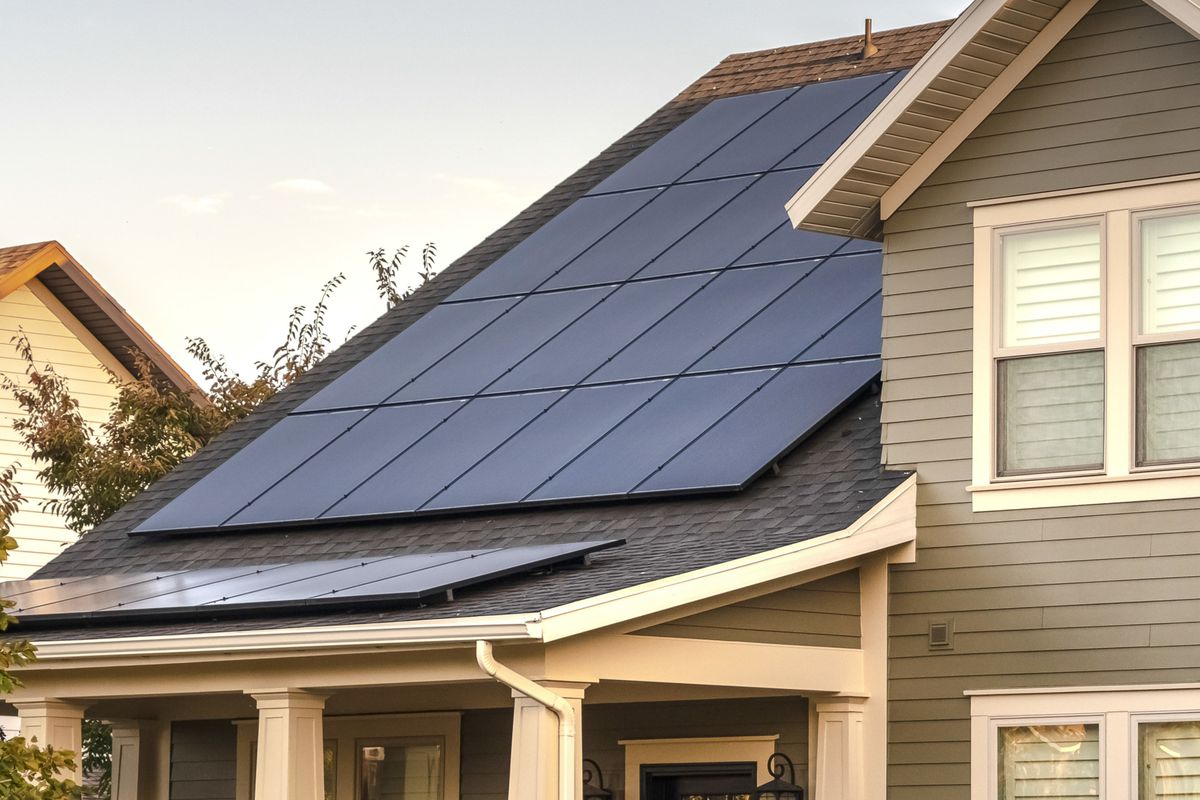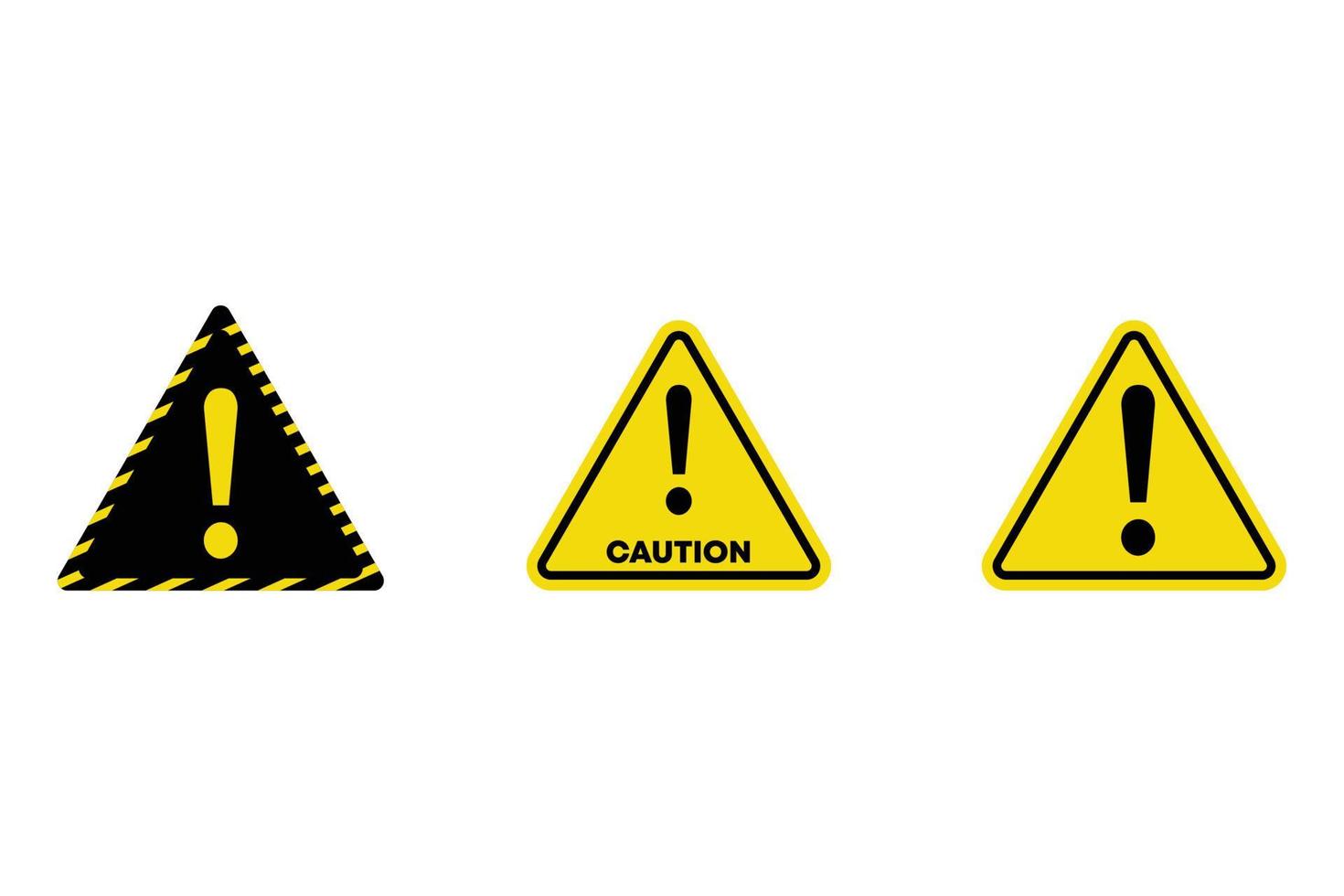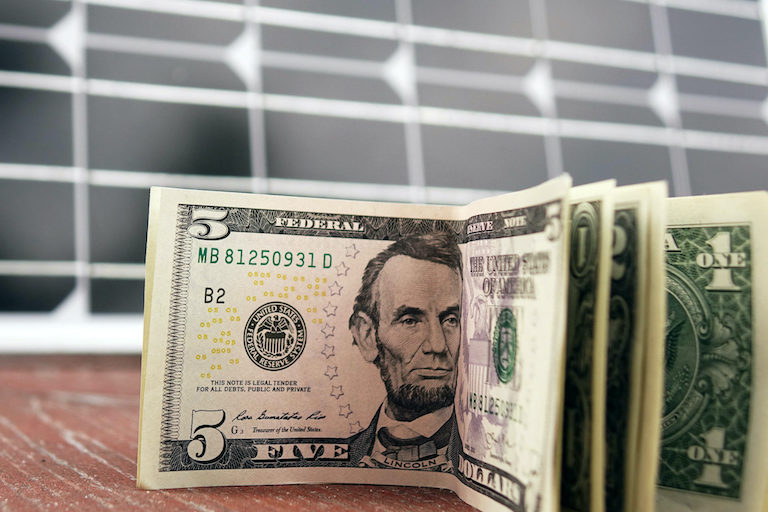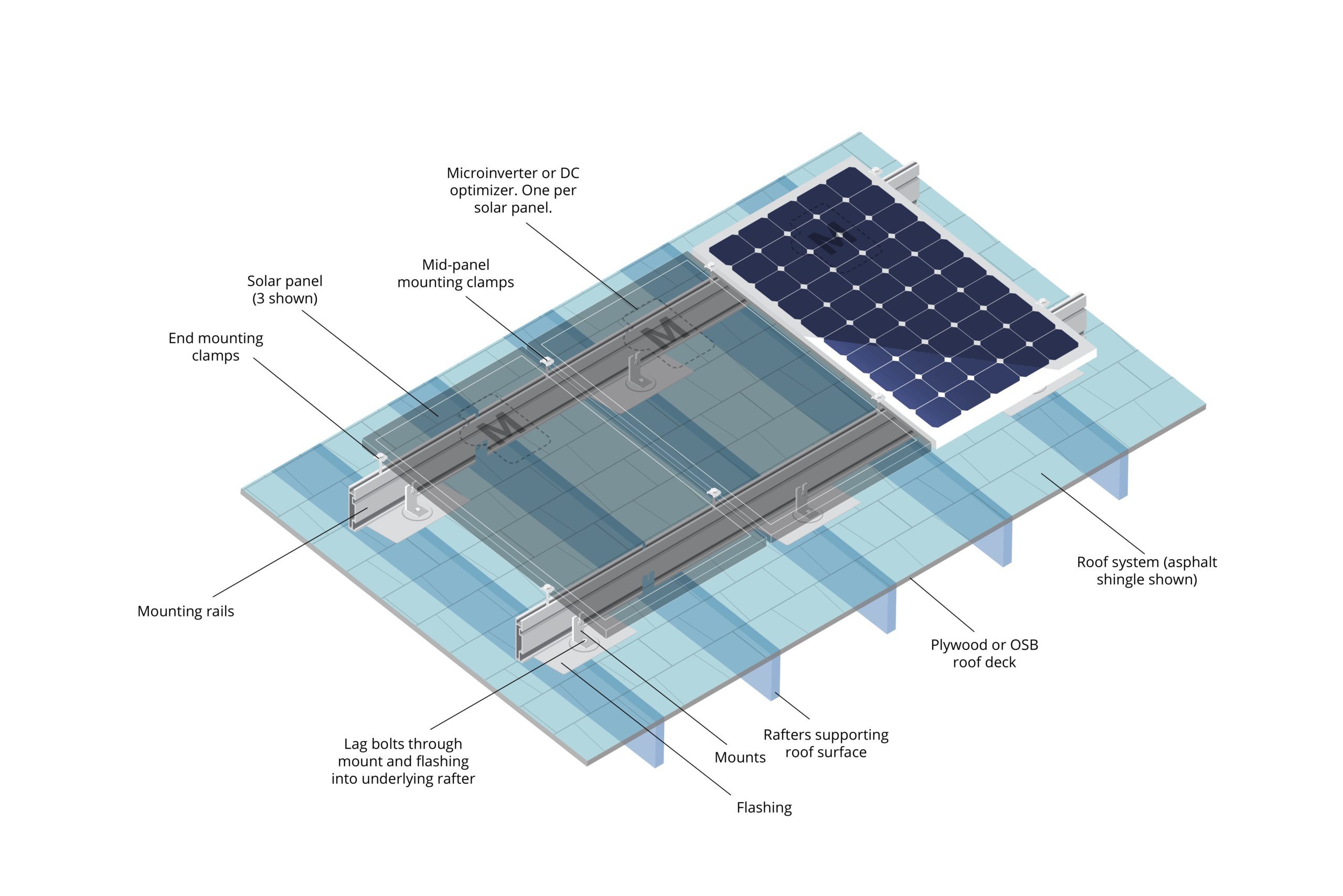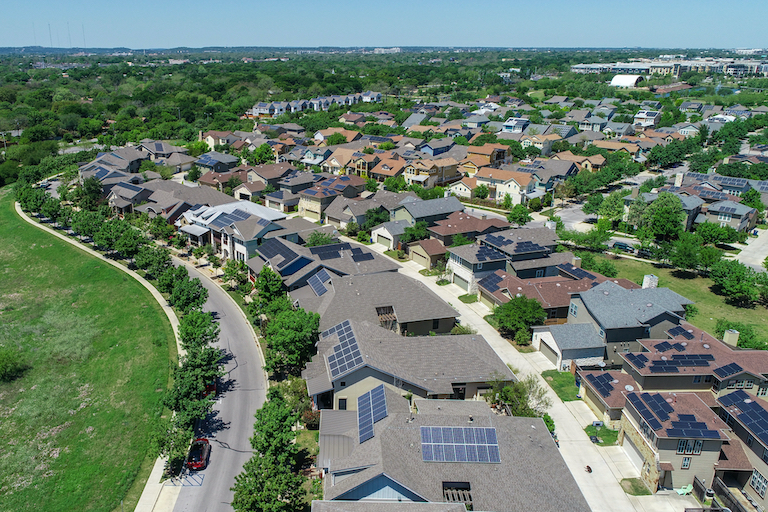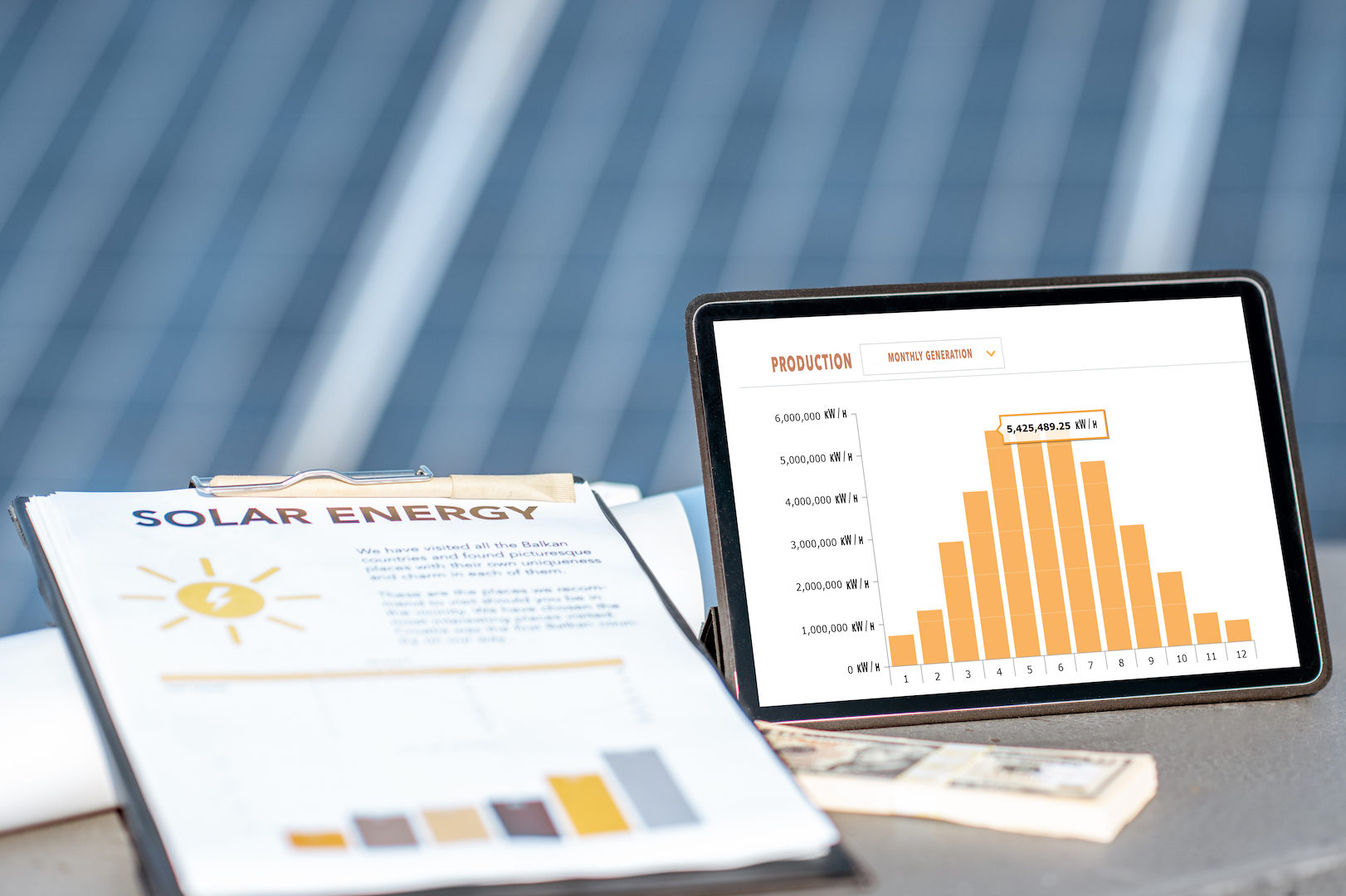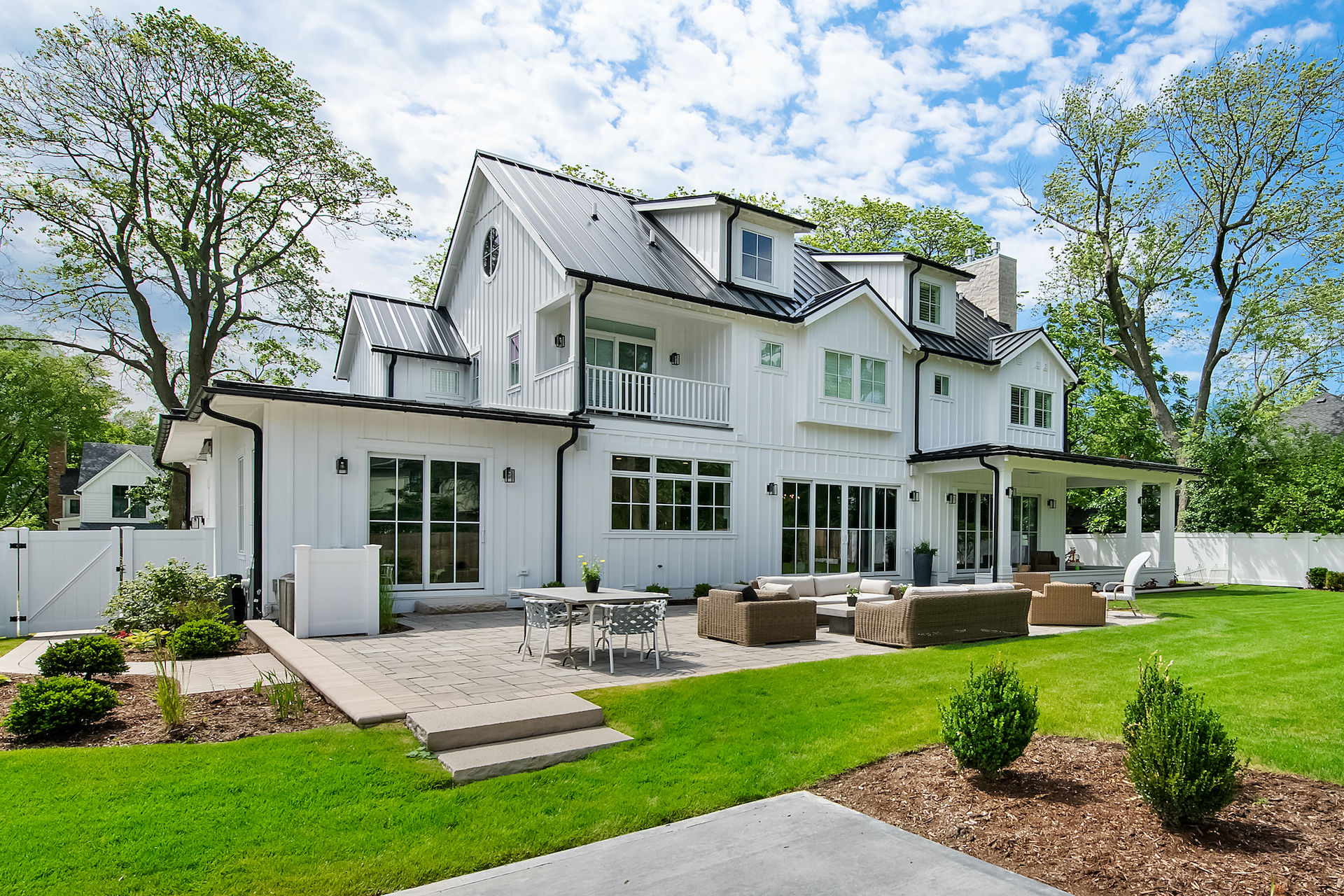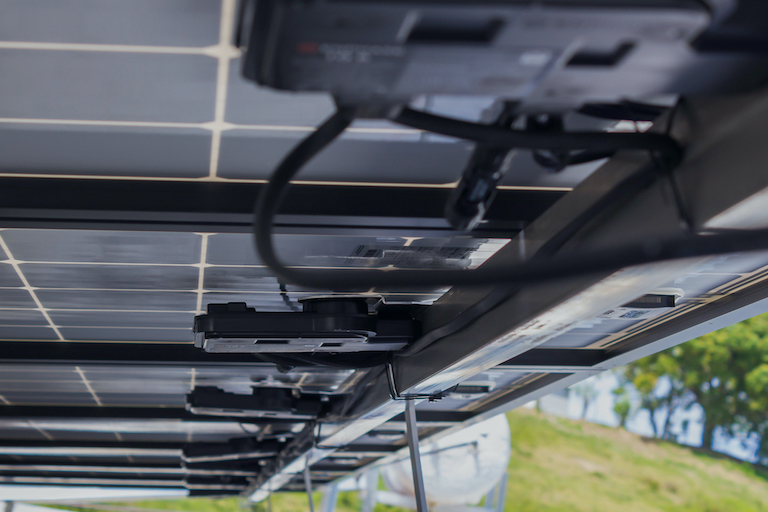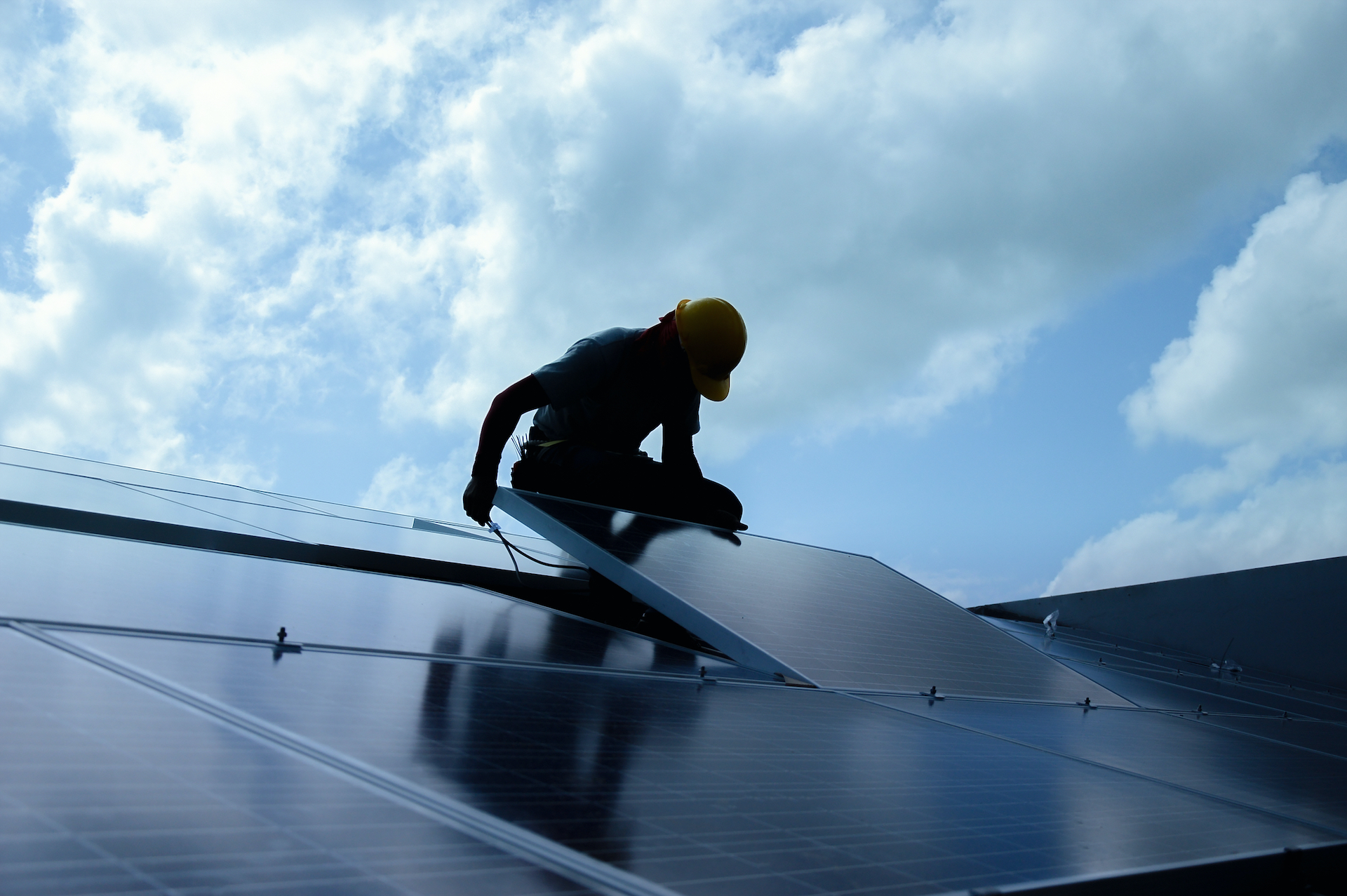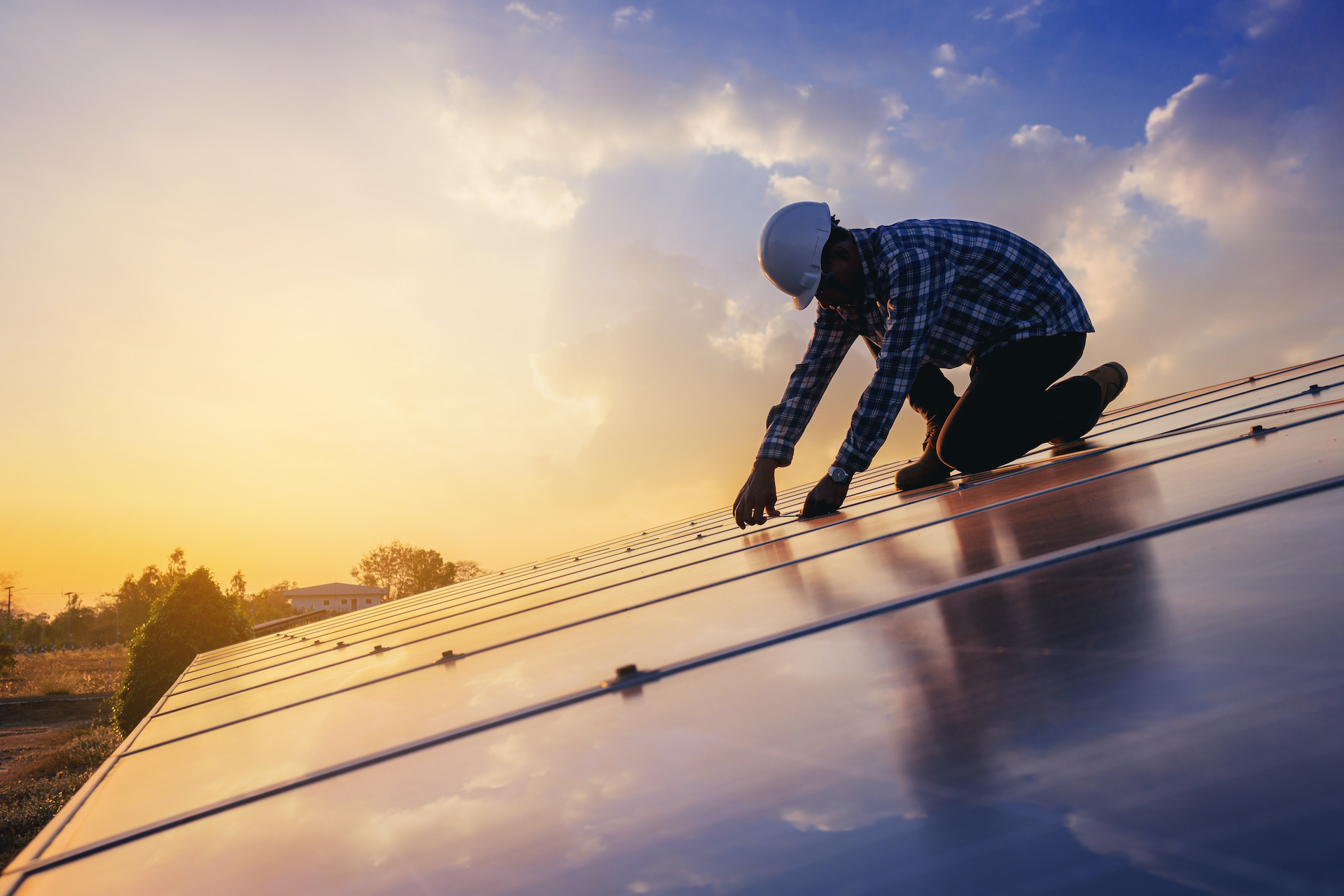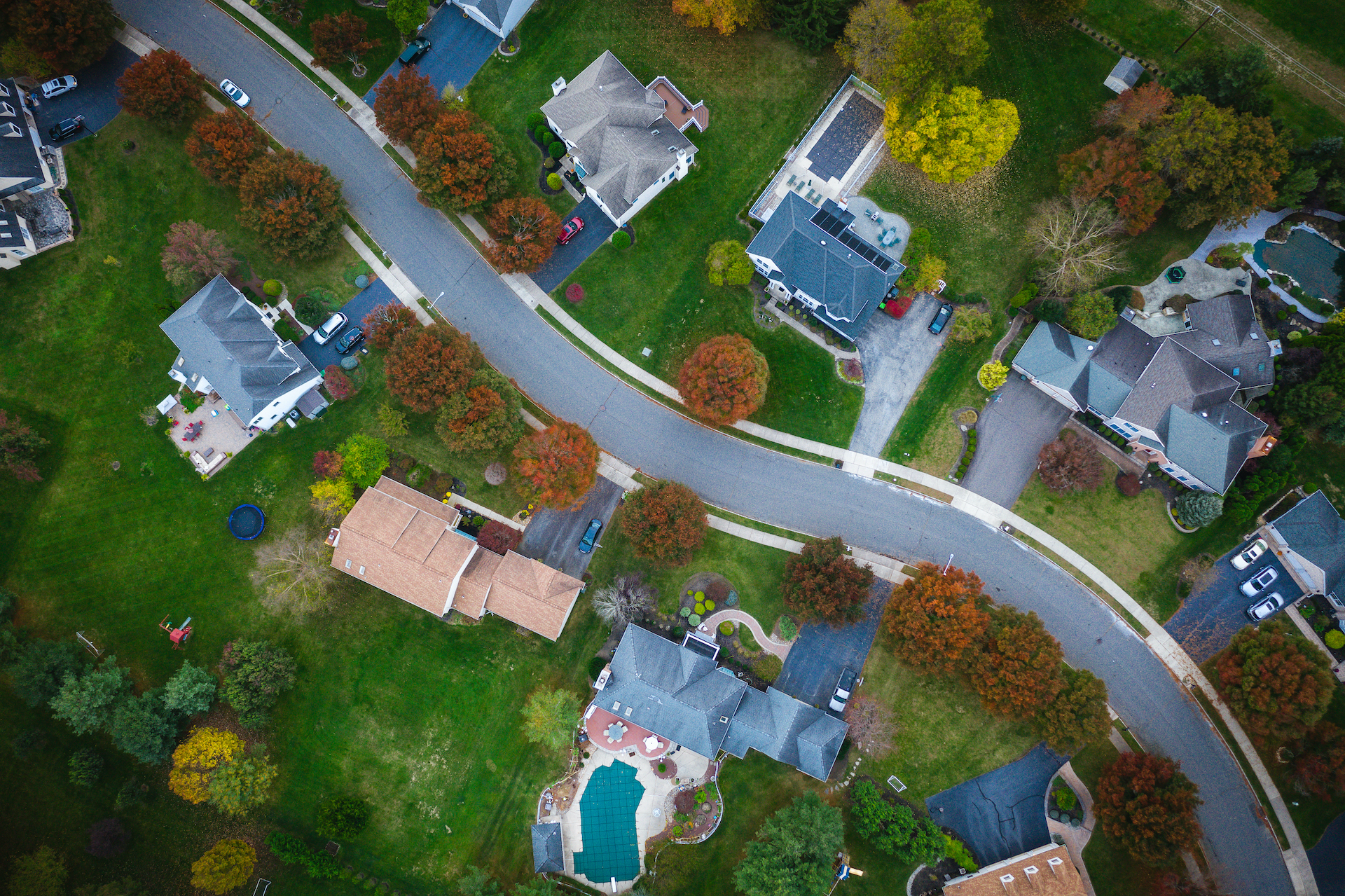General FAQs
Solar is viable just about anywhere. Solar technology and equipment have improved and costs have fallen so much over the last decade that there’s almost no place in the country where you can’t install solar and get a reasonable return on your investment. The biggest factor is then whether your property is suitable for solar panels. If you live in New Jersey, we’d be happy to take a look and let you know. Start your free Home Solar Assessment here.
Solar panels and solar equipment in general have become very reliable. If you select equipment from a good quality manufacturer, on average only one in 100,000 solar panels and only one out of every 2,000 inverters should fail. Solar mounting systems almost never fail when designed and installed properly. And almost all solar equipment comes with a 25 year warranty.
Even though solar panel manufacturers only warrant their products for 25 years, some solar panels are still in operation after 40 years! As solar technology, materials and manufacturing processes continue to improve, we expect to see warranty lengths extended to 30 years and beyond.
To be honest, there is not a straightforward answer. Dozens of leading solar cell and solar panel manufacturers are constantly updating and improving their products (typically at least twice a year!) and so there’s really no single manufacturer or solar panel which we can say is “best.” What we can say is that there are a number of manufacturers who have a combination of good solar cell technology combined with good materials and manufacturing processes who generally produce good quality solar panels. One (but certainly not the only) indicator of better quality solar panels is a stronger warranty from the manufacturer.
All solar panel manufacturers now warranty their products for at least 25 years. Solar panel warranties have two main components: Power production and manufacturing defects. The ability of any solar panel to produce power will degrade over time at a rate of under 1% per year. The lowest power production warranties promise that the solar panels will produce at least 80% of their initial rated power in year 25. The highest power production warranties promise that the solar panels will produce 90% or more of their initial rated power in year 25. Manufacturing defect (sometimes called “workmanship”) warranties range from 10 years to 25 years. What’s important to understand is that almost all manufacturing defects in solar panels will reduce their power production and so the more important component of a solar panel warranty is the power production portion.
With any solar panel warranty, it’s important to understand what the warranty actually covers should a solar panel have a defect. Most warranties only cover replacing the defective solar panel with a new one and the homeowner would need to pay for removal of the defective solar panel and installation of the new panel. However some warranties cover the labor cost to replace a defective solar panel.
As with any warranty, if the original manufacturer is no longer in business, the warranty is worthless. This is particularly important to consider given the 25 plus year length of a solar panel warranty combined with the fact that almost no solar panel manufacturer has been in the solar business for 25 years (because the solar industry is still young).
Besides solar panels, the two other main components of a home solar system are the mounting system and the inverters (learn more about home solar system components here). All solar mounting systems are now warrantied for 25 years. Inverters can be divided into three main categories: Microinverters, DC optimizers and string inverters. Most microinverters are warrantied for 25 years. DC optimizers are warrantied for 25 years, though you’ll need to pair them with a string inverter which is typically warrantied for 12 years.
Just as we noted for solar panel warranties (or any warranty for that matter), it’s important to consider whether the original manufacturer will be in business for the length of the warranty.
Yes, most solar panel and solar equipment warranties are transferable as long as the solar equipment remains in its originally installed location. However, if you aren’t sure that you’ll be in your home for 25 years, it’s worth asking your solar contractor to confirm whether your warranty is transferable.
If you’re interested in home solar but don’t like the look of traditional solar panels, it’s worth considering solar roofing. However, you should be aware that solar roofing can be significantly more expensive than regular solar panels and that there are fewer installers of solar roofing products so your options will be more limited. You can learn more about solar shingles, solar tiles and solar roofing in general here.
The short answer is yes, solar panels can provide energy for a home which is off the grid. But the longer answer depends on your definition of “off the grid.” If you mean that there is no electric utility connected to a home, you’ll need a home battery and also to carefully consider your home solar design in relation to your energy consumption to ensure that you always have an adequate supply of solar energy. On the other hand, if your intent is to be able to supply all your home’s energy with solar while still being connected to the grid or produce energy for your home if the grid goes down, there are a few things you should be aware of.
The first is that, for safety reasons, home solar systems are required to shut down when the grid goes down unless you have equipment to disconnect your home from the grid (known as an “automatic transfer switch” or ATS for short). Even if your home is able to be disconnected from the grid, you’ll need specialized inverters which are designed to operate when the grid is down.
The second is that you’ll need to consider a home battery system that stores energy which can be used if your home solar system isn’t producing as much energy as your home is using. Home battery systems will vary significantly in design and cost depending on your home’s specific energy profile, your home solar system and your goals for a home battery. There’s a lot to this, so we wrote an article dedicated to home batteries here.
Producing your own clean energy instead of purchasing (primarily) fossil fuel-based energy from your utility has a powerful positive impact on the environment. For example, an average 9 kilowatt (kW) home solar system in New Jersey over its lifetime will avoid 186 tons of carbon dioxide emissions which is the equivalent of planting more than 3,000 trees or taking 41 vehicles off the road and avoiding burning nearly 21,000 gallons of gasoline.
General FAQs
Solar is viable just about anywhere. Solar technology and equipment have improved and costs have fallen so much over the last decade that there’s almost no place in the country where you can’t install solar and get a reasonable return on your investment. The biggest factor is then whether your property is suitable for solar panels. If you live in New Jersey, we’d be happy to take a look and let you know. Start your free Home Solar Assessment here.
Solar panels and solar equipment in general have become very reliable. If you select equipment from a good quality manufacturer, on average only one in 100,000 solar panels and only one out of every 2,000 inverters should fail. Solar mounting systems almost never fail when designed and installed properly. And almost all solar equipment comes with a 25 year warranty.
Even though solar panel manufacturers only warrant their products for 25 years, some solar panels are still in operation after 40 years! As solar technology, materials and manufacturing processes continue to improve, we expect to see warranty lengths extended to 30 years and beyond.
To be honest, there is not a straightforward answer. Dozens of leading solar cell and solar panel manufacturers are constantly updating and improving their products (typically at least twice a year!) and so there’s really no single manufacturer or solar panel which we can say is “best.” What we can say is that there are a number of manufacturers who have a combination of good solar cell technology combined with good materials and manufacturing processes who generally produce good quality solar panels. One (but certainly not the only) indicator of better quality solar panels is a stronger warranty from the manufacturer.
All solar panel manufacturers now warranty their products for at least 25 years. Solar panel warranties have two main components: Power production and manufacturing defects. The ability of any solar panel to produce power will degrade over time at a rate of under 1% per year. The lowest power production warranties promise that the solar panels will produce at least 80% of their initial rated power in year 25. The highest power production warranties promise that the solar panels will produce 90% or more of their initial rated power in year 25. Manufacturing defect (sometimes called “workmanship”) warranties range from 10 years to 25 years. What’s important to understand is that almost all manufacturing defects in solar panels will reduce their power production and so the more important component of a solar panel warranty is the power production portion.
With any solar panel warranty, it’s important to understand what the warranty actually covers should a solar panel have a defect. Most warranties only cover replacing the defective solar panel with a new one and the homeowner would need to pay for removal of the defective solar panel and installation of the new panel. However some warranties cover the labor cost to replace a defective solar panel.
As with any warranty, if the original manufacturer is no longer in business, the warranty is worthless. This is particularly important to consider given the 25 plus year length of a solar panel warranty combined with the fact that almost no solar panel manufacturer has been in the solar business for 25 years (because the solar industry is still young).
Besides solar panels, the two other main components of a home solar system are the mounting system and the inverters (learn more about home solar system components here). All solar mounting systems are now warrantied for 25 years. Inverters can be divided into three main categories: Microinverters, DC optimizers and string inverters. Most microinverters are warrantied for 25 years. DC optimizers are warrantied for 25 years, though you’ll need to pair them with a string inverter which is typically warrantied for 12 years.
Just as we noted for solar panel warranties (or any warranty for that matter), it’s important to consider whether the original manufacturer will be in business for the length of the warranty.
Yes, most solar panel and solar equipment warranties are transferable as long as the solar equipment remains in its originally installed location. However, if you aren’t sure that you’ll be in your home for 25 years, it’s worth asking your solar contractor to confirm whether your warranty is transferable.
If you’re interested in home solar but don’t like the look of traditional solar panels, it’s worth considering solar roofing. However, you should be aware that solar roofing can be significantly more expensive than regular solar panels and that there are fewer installers of solar roofing products so your options will be more limited. You can learn more about solar shingles, solar tiles and solar roofing in general here.
The short answer is yes, solar panels can provide energy for a home which is off the grid. But the longer answer depends on your definition of “off the grid.” If you mean that there is no electric utility connected to a home, you’ll need a home battery and also to carefully consider your home solar design in relation to your energy consumption to ensure that you always have an adequate supply of solar energy. On the other hand, if your intent is to be able to supply all your home’s energy with solar while still being connected to the grid or produce energy for your home if the grid goes down, there are a few things you should be aware of.
The first is that, for safety reasons, home solar systems are required to shut down when the grid goes down unless you have equipment to disconnect your home from the grid (known as an “automatic transfer switch” or ATS for short). Even if your home is able to be disconnected from the grid, you’ll need specialized inverters which are designed to operate when the grid is down.
The second is that you’ll need to consider a home battery system that stores energy which can be used if your home solar system isn’t producing as much energy as your home is using. Home battery systems will vary significantly in design and cost depending on your home’s specific energy profile, your home solar system and your goals for a home battery. There’s a lot to this, so we wrote an article dedicated to home batteries here.
Producing your own clean energy instead of purchasing (primarily) fossil fuel-based energy from your utility has a powerful positive impact on the environment. For example, an average 9 kilowatt (kW) home solar system in New Jersey over its lifetime will avoid 186 tons of carbon dioxide emissions which is the equivalent of planting more than 3,000 trees or taking 41 vehicles off the road and avoiding burning nearly 21,000 gallons of gasoline.
Financial FAQs
This is probably the most common question that homeowners have – so much so that we wrote an entire article about it here. Unfortunately, there isn’t a very common answer. Home solar pricing varies by state due to labor cost differences, incentive differences and many other factors. But more importantly, it varies based on the specifics of the home solar system. How large is the system? What type of equipment is being used? Will the installation be simple or more complicated? Are there upgrades which are required to accommodate solar? These are just a few of the questions which need to be answered before someone can give you a more specific price on home solar.
But if you just want a general estimate, you can safely expect a home solar system to cost somewhere between $15,000 and $45,000 before factoring in the 26% federal tax credit. We understand that this is a big range, but the fact is that each home solar system and its installation are unique and there’s no accurate rule of thumb as far as pricing goes.
Sentinel’s business was designed to help homeowners figure out what the optimal home solar system is for them and what a fair price is. Learn how we do that here.
This is another very common question which we also wrote an entire article on. You can check that out here, but the short answer is “yes,” several studies have shown that home solar increases a home’s value. The best known example of this is a study that Zillow did in 2019 determined that, on average, home solar increased a home’s value by 4.1%. However, since there’s currently no standardized way for realtors or mortgage companies to assess the value of a home solar system, you should expect that the premium you’d receive by adding solar to your home could vary quite a bit.
Unfortunately, this is another question to which there’s no simple answer. Generally speaking, in most states, home solar will save you money. The complexity in getting to a specific answer is similar to our answer on how much solar panels cost – namely that each home solar system is unique in both its cost and its ability to generate energy. Add in that each state has different policies and regulations on solar and each utility within a state can also have different policies, and it’s basically impossible to provide an answer without looking at an individual home and potential system.
The complexity of home solar and the uniqueness of each home and homeowner is why we started Sentinel – to give homeowners a better way to evaluate home solar and clean energy. Learn how we do that here.
Generally speaking, yes, most utilities will buy any excess solar energy you produce. However, the terms under which they’ll buy this electricity can vary widely. The first thing to check is whether your state has “net metering” laws which require utilities to effectively purchase your excess solar energy for the same price as you pay for electricity. If your state has a net metering law, your electric meter will measure how much electricity you consume and how much you export back to the grid and your electric bill will be the “net” of the two. If you generate a credit (meaning you exported more electricity than you consumed in that month) most utilities will allow you to carry that credit forward and use it in future months where you may consume more electricity than you export.
It’s important to understand what your state and utility’s net metering laws are so that you can properly design your home solar system. For states or utilities where any energy you export is credited at a much lower wholesale rate, you’ll want to design your system to minimize the amount of energy you export or consider a home battery to store your excess solar electricity so that you can use it later.
The primary incentive for home solar systems is the Federal Solar Investment Tax Credit (ITC), which is currently 26% of the project cost. However, only the owner of the home solar system is eligible to claim this credit, so if you sign up for a solar lease or solar PPA where a third-party owns the system, you are not eligible to claim the ITC or any other incentives. If you purchase a home solar system with cash or a solar loan (you own the system), here’s an example to illustrate how the Federal ITC would work.
Let’s say your home solar system costs $20,000. Then your tax credit would be $20,000 x 26% = $5,200. Let’s say you owed $10,000 in taxes. After applying the $5,200 tax credit, you would only owe $4,800. If you don’t owe enough tax to claim the full tax credit in a single year, you are allowed to carry the unused portion of the tax credit forward and apply it to tax owed in future years as long as the ITC is still in place. You can find some more information on the ITC here, but will need to consult your tax professional for advice on your specific situation.
Other incentives may be available on a state-by-state basis and include various types of programs such as those which provide a cash rebate, production based incentives (PBIs) such as SRECs or other tax incentives such as no sales tax on solar equipment or tax abatements if your property value increases as a result of installing home solar. You can find a more complete list of incentives for home solar and energy efficiency at dsireusa.org.
We think solar loans are better than solar leases. Here’s why:
We believe that you’re almost always better off owning your home solar system than having a third-party own it. To put it simply, if you own it, you own all the benefits of home solar including all incentives and energy savings. If a third-party owns it, you’re splitting the benefits with a company who is making sure they get a significant share of the benefits (or else they wouldn’t be in business). There’s really only one situation where we believe a homeowner may benefit from third-party ownership and that is if they don’t owe enough tax to fully utilize the Federal ITC. You can read more about third-party ownership here.
While home battery costs have decreased significantly in the last few years and are projected to continue decreasing in the coming years, they’re still pretty expensive. Just like the cost of a home solar system, the cost of a home battery will be different for each homeowner and is determined by what they want their home battery to do. Smaller capacity home batteries, which are used for load or rate shifting, can cost $5,000 to $10,000. Larger capacity home batteries which back up some or all of your home in the event of a power outage, are likely to be anywhere from $10,000 to $60,000 or more.
For more detailed information on home batteries, you can read more here.
Home solar systems are inherently very reliable since there are no moving parts. And almost all components of a home solar system come with a 25 year manufacturer’s warranty. But 25 years is a long time (what else do you own that has a 25 year warranty?!), so you’re likely to encounter some maintenance costs over its lifetime.
If you own your home solar system and are using a string inverter or DC optimizers paired with a string inverter, you’ll almost certainly need to replace that inverter once after 10-15 years. In the unlikely event that a solar panel or other piece of equipment fails, depending on the specific warranty on that piece of equipment, you may need to pay the cost of labor to repair or replace the equipment (all manufacturer warranties provide replacement parts under their 25 year warranty).
Other maintenance costs may include cleaning the solar panels (though there’s nothing complicated about this and you may be able to do it on your own) or trimming trees which have grown large enough to shade your solar panels.
Financial FAQs
This is probably the most common question that homeowners have – so much so that we wrote an entire article about it here. Unfortunately, there isn’t a very common answer. Home solar pricing varies by state due to labor cost differences, incentive differences and many other factors. But more importantly, it varies based on the specifics of the home solar system. How large is the system? What type of equipment is being used? Will the installation be simple or more complicated? Are there upgrades which are required to accommodate solar? These are just a few of the questions which need to be answered before someone can give you a more specific price on home solar.
But if you just want a general estimate, you can safely expect a home solar system to cost somewhere between $15,000 and $45,000 before factoring in the 26% federal tax credit. We understand that this is a big range, but the fact is that each home solar system and its installation are unique and there’s no accurate rule of thumb as far as pricing goes.
Sentinel’s business was designed to help homeowners figure out what the optimal home solar system is for them and what a fair price is. Learn how we do that here.
This is another very common question which we also wrote an entire article on. You can check that out here, but the short answer is “yes,” several studies have shown that home solar increases a home’s value. The best known example of this is a study that Zillow did in 2019 determined that, on average, home solar increased a home’s value by 4.1%. However, since there’s currently no standardized way for realtors or mortgage companies to assess the value of a home solar system, you should expect that the premium you’d receive by adding solar to your home could vary quite a bit.
Unfortunately, this is another question to which there’s no simple answer. Generally speaking, in most states, home solar will save you money. The complexity in getting to a specific answer is similar to our answer on how much solar panels cost – namely that each home solar system is unique in both its cost and its ability to generate energy. Add in that each state has different policies and regulations on solar and each utility within a state can also have different policies, and it’s basically impossible to provide an answer without looking at an individual home and potential system.
The complexity of home solar and the uniqueness of each home and homeowner is why we started Sentinel – to give homeowners a better way to evaluate home solar and clean energy. Learn how we do that here.
Generally speaking, yes, most utilities will buy any excess solar energy you produce. However, the terms under which they’ll buy this electricity can vary widely. The first thing to check is whether your state has “net metering” laws which require utilities to effectively purchase your excess solar energy for the same price as you pay for electricity. If your state has a net metering law, your electric meter will measure how much electricity you consume and how much you export back to the grid and your electric bill will be the “net” of the two. If you generate a credit (meaning you exported more electricity than you consumed in that month) most utilities will allow you to carry that credit forward and use it in future months where you may consume more electricity than you export.
It’s important to understand what your state and utility’s net metering laws are so that you can properly design your home solar system. For states or utilities where any energy you export is credited at a much lower wholesale rate, you’ll want to design your system to minimize the amount of energy you export or consider a home battery to store your excess solar electricity so that you can use it later.
The primary incentive for home solar systems is the Federal Solar Investment Tax Credit (ITC), which is currently 26% of the project cost. However, only the owner of the home solar system is eligible to claim this credit, so if you sign up for a solar lease or solar PPA where a third-party owns the system, you are not eligible to claim the ITC or any other incentives. If you purchase a home solar system with cash or a solar loan (you own the system), here’s an example to illustrate how the Federal ITC would work.
Let’s say your home solar system costs $20,000. Then your tax credit would be $20,000 x 26% = $5,200. Let’s say you owed $10,000 in taxes. After applying the $5,200 tax credit, you would only owe $4,800. If you don’t owe enough tax to claim the full tax credit in a single year, you are allowed to carry the unused portion of the tax credit forward and apply it to tax owed in future years as long as the ITC is still in place. You can find some more information on the ITC here, but will need to consult your tax professional for advice on your specific situation.
Other incentives may be available on a state-by-state basis and include various types of programs such as those which provide a cash rebate, production based incentives (PBIs) such as SRECs or other tax incentives such as no sales tax on solar equipment or tax abatements if your property value increases as a result of installing home solar. You can find a more complete list of incentives for home solar and energy efficiency at dsireusa.org.
We think solar loans are better than solar leases. Here’s why:
We believe that you’re almost always better off owning your home solar system than having a third-party own it. To put it simply, if you own it, you own all the benefits of home solar including all incentives and energy savings. If a third-party owns it, you’re splitting the benefits with a company who is making sure they get a significant share of the benefits (or else they wouldn’t be in business). There’s really only one situation where we believe a homeowner may benefit from third-party ownership and that is if they don’t owe enough tax to fully utilize the Federal ITC. You can read more about third-party ownership here.
While home battery costs have decreased significantly in the last few years and are projected to continue decreasing in the coming years, they’re still pretty expensive. Just like the cost of a home solar system, the cost of a home battery will be different for each homeowner and is determined by what they want their home battery to do. Smaller capacity home batteries, which are used for load or rate shifting, can cost $5,000 to $10,000. Larger capacity home batteries which back up some or all of your home in the event of a power outage, are likely to be anywhere from $10,000 to $60,000 or more.
For more detailed information on home batteries, you can read more here.
Home solar systems are inherently very reliable since there are no moving parts. And almost all components of a home solar system come with a 25 year manufacturer’s warranty. But 25 years is a long time (what else do you own that has a 25 year warranty?!), so you’re likely to encounter some maintenance costs over its lifetime.
If you own your home solar system and are using a string inverter or DC optimizers paired with a string inverter, you’ll almost certainly need to replace that inverter once after 10-15 years. In the unlikely event that a solar panel or other piece of equipment fails, depending on the specific warranty on that piece of equipment, you may need to pay the cost of labor to repair or replace the equipment (all manufacturer warranties provide replacement parts under their 25 year warranty).
Other maintenance costs may include cleaning the solar panels (though there’s nothing complicated about this and you may be able to do it on your own) or trimming trees which have grown large enough to shade your solar panels.
How Solar Panels Work
Standard solar panels produce about 18 watts per square foot. Premium solar panels can produce up to 19 watts per square foot, but as their name suggests, they come at a premium price. Home solar panel systems average about 9,000 watts, so an average system using standard solar panels would require about 500 square feet of total roof space.
Even though typical roofs are about 2,500 square feet and you’d think that should be plenty of space, not all of that roof area is suitable for solar panels. First (and this may sound obvious), you want to locate solar panels where they receive the most sun so you’ll want unshaded open roof space which faces south, east or west. Northern facing roof planes or roof planes which are shaded are not good candidates for solar panels. Second, roof projections like skylights, vent pipes, chimneys or dormers will also reduce the area available for solar panels. And third, most local cities and towns require that the roof is accessible for maintenance or firefighters so you most likely won’t be able to place solar panels two to three feet around the perimeter of the roof.
If you have enough of the right space, your roof is a great place for solar panels. But if you don’t, you may be able to install them at ground level on your property. If you don’t have space on your property, your next best option would be to subscribe to a local community solar program.
Typical home solar systems will not work during a power outage. This is a safety precaution which requires that home solar systems shut off if the grid goes down to avoid pushing power back into the grid and potentially electrocuting a person who is working to restore grid power.
For a home solar system to continue working during a power outage, you’ll need to add a home battery. Home battery systems contain two specialized pieces of equipment which allow your home solar system to work when the grid is down. The first is a automatic transfer switch which physically disconnects your home from the grid so that no electricity can flow from your home back into the grid (note that this is the same type of equipment which you’d have if you had a home generator). The second is a specialized inverter which is designed to continue working in the absence of grid power. To learn more about home battery systems, click here.
Fundamentally, a home battery works by storing energy until it is called upon to deliver that stored energy. In most cases, this would be when your home solar isn’t producing as much energy as your home is using or if the grid goes down. You can learn more about home batteries here.
It’s certainly worth exploring what a home battery could do for you when paired with a home solar system. In the end you’ll need to decide whether you can get the value out of a home battery that you want at a reasonable price. As we’ve detailed in more depth here, the first steps are to understand whether your state or utility policies (primarily net metering rules) create a situation where there’s an economic return on home batteries and then to get a clear understanding of what your goals are for a home battery. From there you can get a preliminary design and estimate of how much a home battery would cost and if there would be an economic return. Then you will be in a better informed position to make a decision.
Sentinel’s home solar design service includes battery design and cost estimates if you’re interested in seeing what a home battery might cost and might be able to do for you. Learn more here.
The simple answer is yes, they will work any time there’s some light for them to absorb. The key thing to understand is that the amount of energy solar panels generate is directly related to how much sun they receive. So on a cloudy or rainy day when they receive less sunlight, they will produce less energy. If there’s snow which covers the solar panels, they’ll produce very little energy until the snow melts or slides off and the surface of the solar panel is exposed again. You can read more about how solar panels work in cloudy, rainy or snowy conditions here.
How Solar Panels Work
Standard solar panels produce about 18 watts per square foot. Premium solar panels can produce up to 19 watts per square foot, but as their name suggests, they come at a premium price. Home solar panel systems average about 9,000 watts, so an average system using standard solar panels would require about 500 square feet of total roof space.
Even though typical roofs are about 2,500 square feet and you’d think that should be plenty of space, not all of that roof area is suitable for solar panels. First (and this may sound obvious), you want to locate solar panels where they receive the most sun so you’ll want unshaded open roof space which faces south, east or west. Northern facing roof planes or roof planes which are shaded are not good candidates for solar panels. Second, roof projections like skylights, vent pipes, chimneys or dormers will also reduce the area available for solar panels. And third, most local cities and towns require that the roof is accessible for maintenance or firefighters so you most likely won’t be able to place solar panels two to three feet around the perimeter of the roof.
If you have enough of the right space, your roof is a great place for solar panels. But if you don’t, you may be able to install them at ground level on your property. If you don’t have space on your property, your next best option would be to subscribe to a local community solar program.
Typical home solar systems will not work during a power outage. This is a safety precaution which requires that home solar systems shut off if the grid goes down to avoid pushing power back into the grid and potentially electrocuting a person who is working to restore grid power.
For a home solar system to continue working during a power outage, you’ll need to add a home battery. Home battery systems contain two specialized pieces of equipment which allow your home solar system to work when the grid is down. The first is a automatic transfer switch which physically disconnects your home from the grid so that no electricity can flow from your home back into the grid (note that this is the same type of equipment which you’d have if you had a home generator). The second is a specialized inverter which is designed to continue working in the absence of grid power. To learn more about home battery systems, click here.
Fundamentally, a home battery works by storing energy until it is called upon to deliver that stored energy. In most cases, this would be when your home solar isn’t producing as much energy as your home is using or if the grid goes down. You can learn more about home batteries here.
It’s certainly worth exploring what a home battery could do for you when paired with a home solar system. In the end you’ll need to decide whether you can get the value out of a home battery that you want at a reasonable price. As we’ve detailed in more depth here, the first steps are to understand whether your state or utility policies (primarily net metering rules) create a situation where there’s an economic return on home batteries and then to get a clear understanding of what your goals are for a home battery. From there you can get a preliminary design and estimate of how much a home battery would cost and if there would be an economic return. Then you will be in a better informed position to make a decision.
Sentinel’s home solar design service includes battery design and cost estimates if you’re interested in seeing what a home battery might cost and might be able to do for you. Learn more here.
The simple answer is yes, they will work any time there’s some light for them to absorb. The key thing to understand is that the amount of energy solar panels generate is directly related to how much sun they receive. So on a cloudy or rainy day when they receive less sunlight, they will produce less energy. If there’s snow which covers the solar panels, they’ll produce very little energy until the snow melts or slides off and the surface of the solar panel is exposed again. You can read more about how solar panels work in cloudy, rainy or snowy conditions here.
Solar System Selection & Installation
When considering home solar, there are many choices you’ll need to make – the most important one is choosing your solar contractor. Even the best products will not perform properly if your home solar system is not designed or installed correctly.
If you’ve found a contractor you’re comfortable with, you’ll want to make sure you understand whether any upgrades are required to prepare your home for solar. If you have an older roof or older electrical panel, these may need to be replaced before installing home solar.
Next, you’ll want to ensure that the system is designed to balance how much energy you want your home solar to supply with your budget. If you’re aware of any upcoming changes in your energy use (improvements in your home’s energy efficiency, adding a pool, hot tub, EV, etc.) those should be factored in too.
Finally, you’ll want to ensure that the equipment proposed for your home solar system comes from manufacturers with a reputation for quality. Solar panels, inverters and flashing are the most critical pieces and not all are created equally.
Sound like a lot? It is! And we barely scratched the surface in the answer above. Learn how we help homeowners evaluate their home solar and clean energy options here.
As we mentioned in our answer to the previous question, choosing a solar contractor is the most important decision you can make in the home solar process. There’s much more to it than can be answered here so we wrote an entire article about it which you can find here. We’d recommend reading the full article – it’s that important.
In order to understand how solar panels get installed, it’s helpful to understand what the components are in a home solar system and what function each of them performs. You can learn more about home solar components here.
A home solar installation starts with reviewing the solar panel layout and confirming these against the actual conditions on your roof or property to make sure that everything fits and that the solar panels are in locations where they will receive good sunlight. Once that’s complete, the attachment points for the solar panel mounting system will be marked off and brackets will be installed by bolting them to your roof structure. Rails will be mounted to the brackets, any rooftop power electronics will be mounted to the rails and then the solar panels will be clamped to the rails. This is a bit of an oversimplification, but that’s once the solar panels are clamped to the rails, the rooftop portion is essentially done.
As the rooftop work is happening, an electrician will begin preparing your home’s electrical system to connect your home solar system. This includes installing inverters, disconnects, meters, circuit breakers and monitoring equipment. Typically these pieces of equipment are located near your electrical panel, though disconnect locations may be specified by your local city or town or utility. Once the equipment is installed, the electrician will run wiring and conduit to connect the solar panels to your home’s electrical panel. The wiring and conduit may run on the outside of your home or may be run on the inside through your attic, walls, etc.
Note that you’ll want to understand where the contractor is planning to run the wiring and conduit before you sign a contract. If you don’t, they’ll likely choose the shortest and most convenient route between your solar panels and your electrical panel and could be highly visible from the outside of your home.
Once the solar panels are connected to the inverter, disconnects, meters, circuit breakers and monitoring and these are connected to your home’s electrical system, that’s it!
The actual installation of a home solar system is typically completed in 1-3 days and depends on the size of the home solar system, whether any additional upgrades are required prior to installing the solar and how complicated the installation is. For example installations on steep roofs or third-stories will take longer than a similar installation on a less steep roof or first story.
The longer part of the process is obtaining approval from your local city or town and utility. Approvals, permits and inspections can take several weeks or even a few months to receive, but the actual installation should only take a few days at most.
The worse condition your roof is in, the easier it is to damage during a solar installation. If your roof is in good shape to begin with, proper and careful installation of solar panels will not damage your roof. Damage to your roof during solar installation can happen primarily in two ways.
The first is from the amount of traffic and materials which will be on your roof during a solar installation. Careless workers who don’t pay attention to how and where they’re walking on your roof or who drop tools or materials on your roof can certainly damage it.
The second and more critical way that your roof can be damaged is from the installation of flashings which are needed to waterproof the solar mounting system’s attachment points. In order to properly install these flashings, shingles or tiles need to be pried up and some nails may need to be removed to slide the flashings between the layers of roofing. Old and brittle roofing makes it more likely that damage will occur during this part of the installation process. But careless workers who are rushing to install solar as fast as possible are more likely to be at fault.
The best way to ensure that your roof is not damaged during a solar installation is to choose a quality-oriented contractor who is likely to be in business for many years to come. Some solar contractors also offer roof penetration or leak warranties. If a contractor is responsible for coming back to fix any damage that they cause which leads to a leak, they should be more careful with how they treat your roof. However, choose wisely – as with any warranty, if the company who provided the warranty is not in business down the road when there is a problem, the warranty isn’t worth much.
The answer to this is both yes and no. Installing solar panels will void any material or workmanship warranty for roofing which has been altered. Altered can mean either drilling a hole through the roofing material to attach the solar panel mounting system or disturbing the original installation of the roof – for example prying up shingles to install the flashing. A roofing manufacturer also may not honor a warranty if their roofing has been damaged during installation of the home solar system (see our answer to the question above).
The warranty on the rest of the roof which was not altered should remain intact. To go one step further, any issue which is the result of a manufacturing defect and is not impacted by the installation of home solar should also be fully covered. For example, let’s say that there’s excessive loss of the granules on your shingles or the color fades. Since the solar installation has no effect on these types of roofing manufacturing defects, your roof warranty should remain in full effect.
The last thing to be aware of is that if there is a manufacturing defect in your roof which is covered, the roofing manufacturer will not cover the cost of removing and replacing your home solar system – which can cost several thousand dollars.
Choosing a quality roofing manufacturer and product, quality roofer and quality solar contractor will significantly lower the chances of running into any of these situations.
Since home solar systems come with a 25 year warranty and can produce energy for even longer than that, it’s best to have a roof which will last just as long. Most homes in the US have asphalt shingle roofs which typically last anywhere from 20 to 30 years. If your asphalt shingle roof is more than 10 years old, you should have it carefully evaluated before installing solar. Even though other roof types such as metal or tile last longer than asphalt shingle roofs, if they’re more than 10 years old it’s probably a good idea to have them evaluated as well. The last thing you want to do is to have to pay thousands of dollars to have your home solar system removed so that your roof can be replaced.
System monitoring now comes standard with all inverters and provides homeowners with information on how their system is performing. These monitoring systems collect data on energy generation and faults, reporting them through a website or app that the homeowner can set up. When your system indicates a fault and stops operating, it’s pretty clear that there’s an issue. But how do you know if your solar panels are producing as much energy as they should?
The first step in understanding whether your panels are working correctly is to have a baseline for how they should be performing. That baseline is set initially when your system is designed and software is used to model how much energy the system should generate on a monthly and annual basis. While modeling has become pretty accurate, there can still be quite a bit of variation between a model and the real world. The difference is that a model averages out weather patterns over the course of 25 years but in the real world, weather patterns change hour-to-hour, day-to-day, week-to-week, month-to-month and year-to-year.
Once your system has been operational for a few months, if you’re paying attention to its energy generation, you’ll start to get a sense for how it performs on sunny days, cloudy days, summer weeks, winter weeks, etc. If you notice that it deviates from its “normal” performance, you may want to have someone check it out.
Depending on your inverter and its monitoring system, you may also be able to set alerts which notify you if the system performance changes from a certain set point or there’s a fault. But if you have this set up and get a performance alert, don’t panic – your system performance may be down because it was cloudy or for some other perfectly normal reason. If the underperformance persists for several days, it may be time to call your contractor.
Yes, you’ll need to request and obtain approval from your utility in order to install home solar. Because your home solar system at some point is likely to provide electricity to the grid, utilities need to make sure that their equipment is able to handle that electricity and any electricity from your neighbors with solar.
Typically your solar contractor will file the request once you sign the contract and will begin ordering equipment and planning the installation once they receive the initial approval from the utility (as well as permit approval from your city or town). Once the system is installed and has passed the city or town inspection, your solar contractor will submit the final paperwork to the utility and will receive “permission to operate” or PTO. At this point, you can turn on your home solar system permanently.
The answer to this depends on your HOA’s bylaws and your state’s laws. Some states have laws which restrict HOAs from stopping a homeowner from installing solar. However you still may need to ask for permission and the HOA can still enforce certain requirements regarding the solar system’s location or appearance.
Solar System Selection & Installation
When considering home solar, there are many choices you’ll need to make – the most important one is choosing your solar contractor. Even the best products will not perform properly if your home solar system is not designed or installed correctly.
If you’ve found a contractor you’re comfortable with, you’ll want to make sure you understand whether any upgrades are required to prepare your home for solar. If you have an older roof or older electrical panel, these may need to be replaced before installing home solar.
Next, you’ll want to ensure that the system is designed to balance how much energy you want your home solar to supply with your budget. If you’re aware of any upcoming changes in your energy use (improvements in your home’s energy efficiency, adding a pool, hot tub, EV, etc.) those should be factored in too.
Finally, you’ll want to ensure that the equipment proposed for your home solar system comes from manufacturers with a reputation for quality. Solar panels, inverters and flashing are the most critical pieces and not all are created equally.
Sound like a lot? It is! And we barely scratched the surface in the answer above. Learn how we help homeowners evaluate their home solar and clean energy options here.
As we mentioned in our answer to the previous question, choosing a solar contractor is the most important decision you can make in the home solar process. There’s much more to it than can be answered here so we wrote an entire article about it which you can find here. We’d recommend reading the full article – it’s that important.
In order to understand how solar panels get installed, it’s helpful to understand what the components are in a home solar system and what function each of them performs. You can learn more about home solar components here.
A home solar installation starts with reviewing the solar panel layout and confirming these against the actual conditions on your roof or property to make sure that everything fits and that the solar panels are in locations where they will receive good sunlight. Once that’s complete, the attachment points for the solar panel mounting system will be marked off and brackets will be installed by bolting them to your roof structure. Rails will be mounted to the brackets, any rooftop power electronics will be mounted to the rails and then the solar panels will be clamped to the rails. This is a bit of an oversimplification, but that’s once the solar panels are clamped to the rails, the rooftop portion is essentially done.
As the rooftop work is happening, an electrician will begin preparing your home’s electrical system to connect your home solar system. This includes installing inverters, disconnects, meters, circuit breakers and monitoring equipment. Typically these pieces of equipment are located near your electrical panel, though disconnect locations may be specified by your local city or town or utility. Once the equipment is installed, the electrician will run wiring and conduit to connect the solar panels to your home’s electrical panel. The wiring and conduit may run on the outside of your home or may be run on the inside through your attic, walls, etc.
Note that you’ll want to understand where the contractor is planning to run the wiring and conduit before you sign a contract. If you don’t, they’ll likely choose the shortest and most convenient route between your solar panels and your electrical panel and could be highly visible from the outside of your home.
Once the solar panels are connected to the inverter, disconnects, meters, circuit breakers and monitoring and these are connected to your home’s electrical system, that’s it!
The actual installation of a home solar system is typically completed in 1-3 days and depends on the size of the home solar system, whether any additional upgrades are required prior to installing the solar and how complicated the installation is. For example installations on steep roofs or third-stories will take longer than a similar installation on a less steep roof or first story.
The longer part of the process is obtaining approval from your local city or town and utility. Approvals, permits and inspections can take several weeks or even a few months to receive, but the actual installation should only take a few days at most.
The worse condition your roof is in, the easier it is to damage during a solar installation. If your roof is in good shape to begin with, proper and careful installation of solar panels will not damage your roof. Damage to your roof during solar installation can happen primarily in two ways.
The first is from the amount of traffic and materials which will be on your roof during a solar installation. Careless workers who don’t pay attention to how and where they’re walking on your roof or who drop tools or materials on your roof can certainly damage it.
The second and more critical way that your roof can be damaged is from the installation of flashings which are needed to waterproof the solar mounting system’s attachment points. In order to properly install these flashings, shingles or tiles need to be pried up and some nails may need to be removed to slide the flashings between the layers of roofing. Old and brittle roofing makes it more likely that damage will occur during this part of the installation process. But careless workers who are rushing to install solar as fast as possible are more likely to be at fault.
The best way to ensure that your roof is not damaged during a solar installation is to choose a quality-oriented contractor who is likely to be in business for many years to come. Some solar contractors also offer roof penetration or leak warranties. If a contractor is responsible for coming back to fix any damage that they cause which leads to a leak, they should be more careful with how they treat your roof. However, choose wisely – as with any warranty, if the company who provided the warranty is not in business down the road when there is a problem, the warranty isn’t worth much.
The answer to this is both yes and no. Installing solar panels will void any material or workmanship warranty for roofing which has been altered. Altered can mean either drilling a hole through the roofing material to attach the solar panel mounting system or disturbing the original installation of the roof – for example prying up shingles to install the flashing. A roofing manufacturer also may not honor a warranty if their roofing has been damaged during installation of the home solar system (see our answer to the question above).
The warranty on the rest of the roof which was not altered should remain intact. To go one step further, any issue which is the result of a manufacturing defect and is not impacted by the installation of home solar should also be fully covered. For example, let’s say that there’s excessive loss of the granules on your shingles or the color fades. Since the solar installation has no effect on these types of roofing manufacturing defects, your roof warranty should remain in full effect.
The last thing to be aware of is that if there is a manufacturing defect in your roof which is covered, the roofing manufacturer will not cover the cost of removing and replacing your home solar system – which can cost several thousand dollars.
Choosing a quality roofing manufacturer and product, quality roofer and quality solar contractor will significantly lower the chances of running into any of these situations.
Since home solar systems come with a 25 year warranty and can produce energy for even longer than that, it’s best to have a roof which will last just as long. Most homes in the US have asphalt shingle roofs which typically last anywhere from 20 to 30 years. If your asphalt shingle roof is more than 10 years old, you should have it carefully evaluated before installing solar. Even though other roof types such as metal or tile last longer than asphalt shingle roofs, if they’re more than 10 years old it’s probably a good idea to have them evaluated as well. The last thing you want to do is to have to pay thousands of dollars to have your home solar system removed so that your roof can be replaced.
System monitoring now comes standard with all inverters and provides homeowners with information on how their system is performing. These monitoring systems collect data on energy generation and faults, reporting them through a website or app that the homeowner can set up. When your system indicates a fault and stops operating, it’s pretty clear that there’s an issue. But how do you know if your solar panels are producing as much energy as they should?
The first step in understanding whether your panels are working correctly is to have a baseline for how they should be performing. That baseline is set initially when your system is designed and software is used to model how much energy the system should generate on a monthly and annual basis. While modeling has become pretty accurate, there can still be quite a bit of variation between a model and the real world. The difference is that a model averages out weather patterns over the course of 25 years but in the real world, weather patterns change hour-to-hour, day-to-day, week-to-week, month-to-month and year-to-year.
Once your system has been operational for a few months, if you’re paying attention to its energy generation, you’ll start to get a sense for how it performs on sunny days, cloudy days, summer weeks, winter weeks, etc. If you notice that it deviates from its “normal” performance, you may want to have someone check it out.
Depending on your inverter and its monitoring system, you may also be able to set alerts which notify you if the system performance changes from a certain set point or there’s a fault. But if you have this set up and get a performance alert, don’t panic – your system performance may be down because it was cloudy or for some other perfectly normal reason. If the underperformance persists for several days, it may be time to call your contractor.
Yes, you’ll need to request and obtain approval from your utility in order to install home solar. Because your home solar system at some point is likely to provide electricity to the grid, utilities need to make sure that their equipment is able to handle that electricity and any electricity from your neighbors with solar.
Typically your solar contractor will file the request once you sign the contract and will begin ordering equipment and planning the installation once they receive the initial approval from the utility (as well as permit approval from your city or town). Once the system is installed and has passed the city or town inspection, your solar contractor will submit the final paperwork to the utility and will receive “permission to operate” or PTO. At this point, you can turn on your home solar system permanently.
The answer to this depends on your HOA’s bylaws and your state’s laws. Some states have laws which restrict HOAs from stopping a homeowner from installing solar. However you still may need to ask for permission and the HOA can still enforce certain requirements regarding the solar system’s location or appearance.
Have a question that’s not on our FAQ list? Send us a message and we’ll answer ASAP.
Have a question that’s not on our FAQ list? Send us a message and we’ll answer ASAP.
Learn about solar
Find honest answers to some of the most commonly asked questions on home solar and clean energy.



